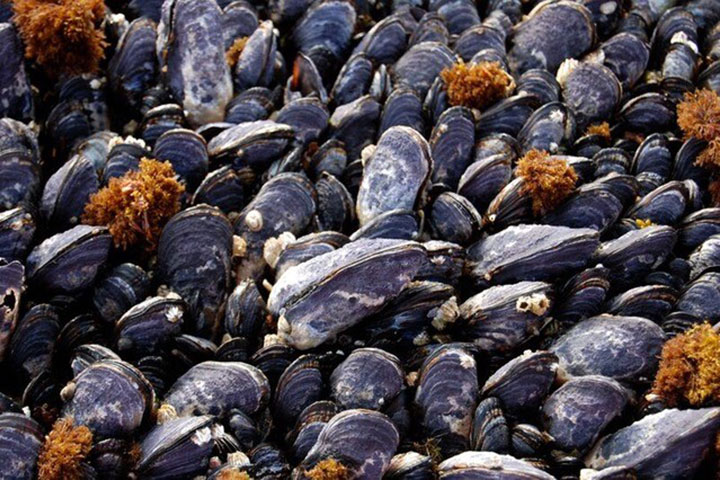Ocean Acidification means major changes for California mussels
For thousands of years, California mussel shells have shared a relatively uniform mineralogical makeup — long, cylindrical calcite crystals ordered in neat vertical rows with crisp, geometric regularity. But in a study published this week in the journal [EasyDNNnewsLink|82], McCoy and her team suggest that escalating rates of ocean acidification are shaking up that shell mineralogy on its most basic structural levels. “What we’ve seen in more recent shells is that the crystals are small and disoriented,” said Assistant Professor of Biological Science Sophie McCoy, who led the study. “These are significant changes in how these animals produce their shells that can be tied to a shifting ocean chemistry.” “When the mussels are ready to build their shells, they first lay down an amorphous soup of calcium carbonate, which they later order and organize,” McCoy said. “More recent shells have just started heaping that calcium carbonate soup where it needs to go and then leaving it there disordered.” The team also found that recent shells exhibited elevated levels of magnesium — a sign that the process of shell formation has been disrupted.
Find the full article [EasyDNNnewsLink|83]
Photo: Sophie McCoy.
Ocean Acidification means major changes for California mussels Read More »



